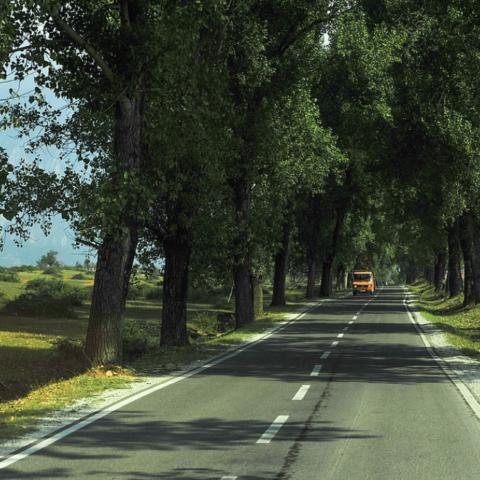Magical Brut
By Pushkala Pillutla
Through all the ideals of architecture, in existence, each period is defined by different styles throughout history. One such fascinating form of architecture is Brutalism. Brutalism is an architectural style developed taking inspiration from the modernist architectural movement and flourished from the 1950s to the 1970s. But here comes the interesting part, brutalism explores architecture in form of angular geometric structures made from poured concrete. It grew very much as reconstruction projects of the post-war era. The term was coined by the pioneer modern architect and painter Le Corbusier from the word ‘beton brut’ which means raw concrete in French. Brutalist design is trimmed to bare minimum stripped back with no decoration as such with the material, usually concrete, speaking for itself. Read more about it here in the Magical Brut
Brutalist architecture involves buildings with plastered raw concrete and trimmed of any ‘extra decorations’; making the building look simple. Brutalist architecture has a direct relationship with the 2nd world war. Brutalists wanted to be honest about the materials used, stripping off all the decorations and trimming it down to the simple concrete plastered surface built in a strict and structured geometrical manner. Celebrating the purest form of materials and form.
Halls of residence at the University of East Anglia. Młotek in Warsaw. Western City Gate, Belgrade, Serbia.
After the initial excitement about the stark style of buildings, the decline began to set in during the 1970s, mainly the criticism was because the style was seen as unwelcoming and inhuman. Brutalism then went very out of style often regarded as harsh or ugly, yet more recently it is really being re-accessed and re-appreciated.
Balfron Tower in London. Habitat 67 in Montreal, Quebec. Preston bus station, Lancashire.
The Barbican Art Centre is one of the most recognised Brutalist buildings in the world. This year it has successfully completed 40 years of its journey and to celebrate its success, a book called Building Uthopia: The Barbican Centre is coming out. The book unfolds the opinions of critics such as Fiona Maddockson music, Lyn Gardner on theatre, Tony Chambers on visual arts, Sukhdev Sandhu on cinema, to name a few; to give their individual opinion on their specialised areas. Also, it includes the tale of Barbican Art Centre since the beginning and how it has faced difficulties throughout time and stood up as one of the most appreciated architectures in the history of time.

The cover image, Building Utopia: The Barbican Centre by Nicholas Kenyon (ed) published by Batsford.
Building Utopia: The Barbican Centre
The title of the book Building Utopia comes from the utopian vision of rebuilding the Barbican. This book will take you through the journey of building the Barbican Centre after it was burned down to ashes during the Second World War by the German bombers leaving behind only a couple of buildings standing straight.
A brief history about the Barbican
Initially, the centre was set up as a go-to in one destination a performing arts centre in the Barbican Estate and was the largest of its kind in Europe. A magnificent cross-section of cultural activities happens here including classical and contemporary music concerts, theatre performances, film screenings and art exhibitions. It also houses a library, three restaurants, and a conservatory. It is surrounded by the Barbican Estate; a residential complex of around 2,000 flats, maisonettes, and houses

The Barbican Archive. The Lakeside Terrace entrance with the new monolith sign introduced as part of the AHMM work, echoing the Silk Street entrance and featuring the renewed seating by Robin Day.
The art centre is called Barbican because during the 19th century it used to be known as The Barbican street which was a bustling commercial area; home to fabric and leather merchants, furriers, glovers and a host of other tradesmen. But after the German bomb attack, it took a while to re-imagine and develop The Barbican Art Centre.
The building of Barbican can be dated back to the year 1955. Where the proposal was put up with the Corporation of London, which finally gets approved in the year 1959. In 1960, along with the Royal Shakespeare Company and London Symphony Orchestra, the planning of Barbican started. After a lot of planning and re-working, the construction work began in the year 1971 and was grandly inaugurated on 3rd March 1982 by the Her Majesty The Queen.

Barbican Archive. The model of the scheme includes a diagonal road across the site, and the proposed use of the circular Coal Exchange. Both were later taken out of the plans.
The book is published to celebrate the 40th anniversary of the brutalist architectural masterpiece which can accommodate theatre
and dance, music of all genres, visual arts, cinema and creative
learning, welcoming a wide range of artists, communities, audiences
and visitors all at one place. Building Utopia outlines the journey throughout building the Barbican Art Centre. The book has detailed chapters by Robert Hewison, Nicholas Kenyon and Elain Harwood along with a few critics such as Fiona Maddocks, Tony Chambers, Lyn Gardner and Sukhdev Sandhu to name a few to give their independent views on their own art forms within the context of this magnificent building.
For more information please visit their official website here. if you enjoyed reading Magical Brut then why not read Ways to Paint Here.
.Cent magazine London Be Inspired; Get Involved





